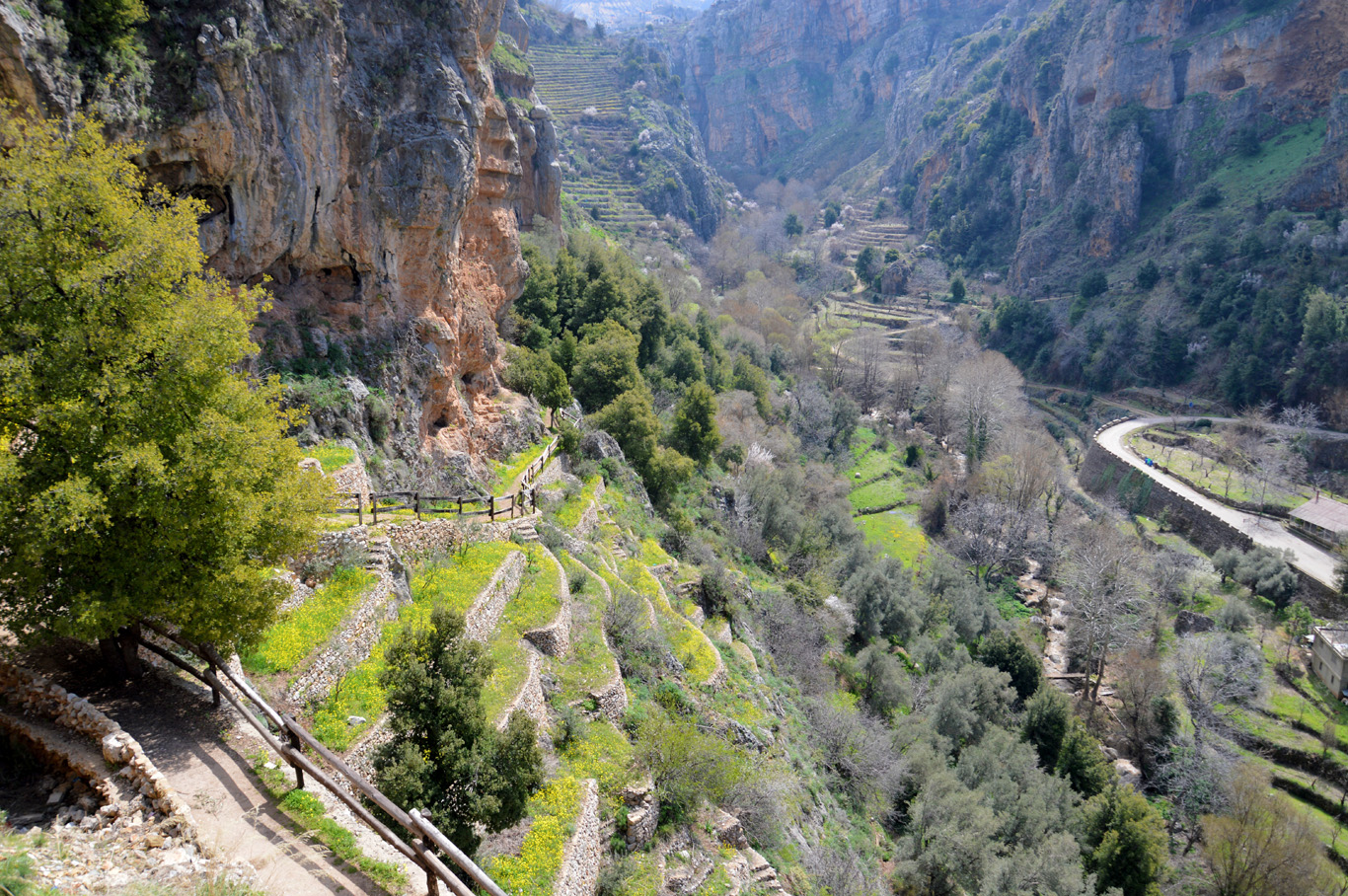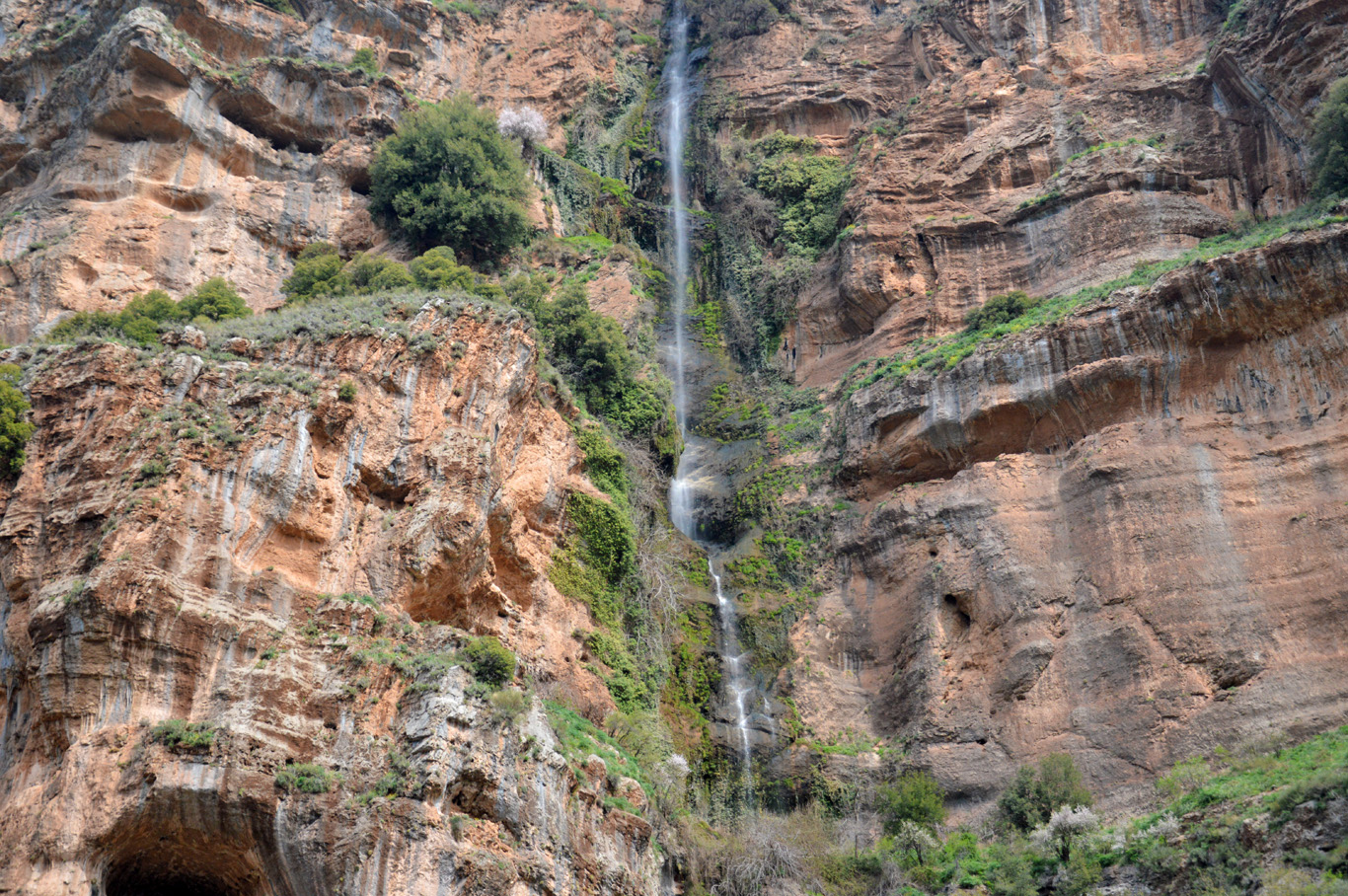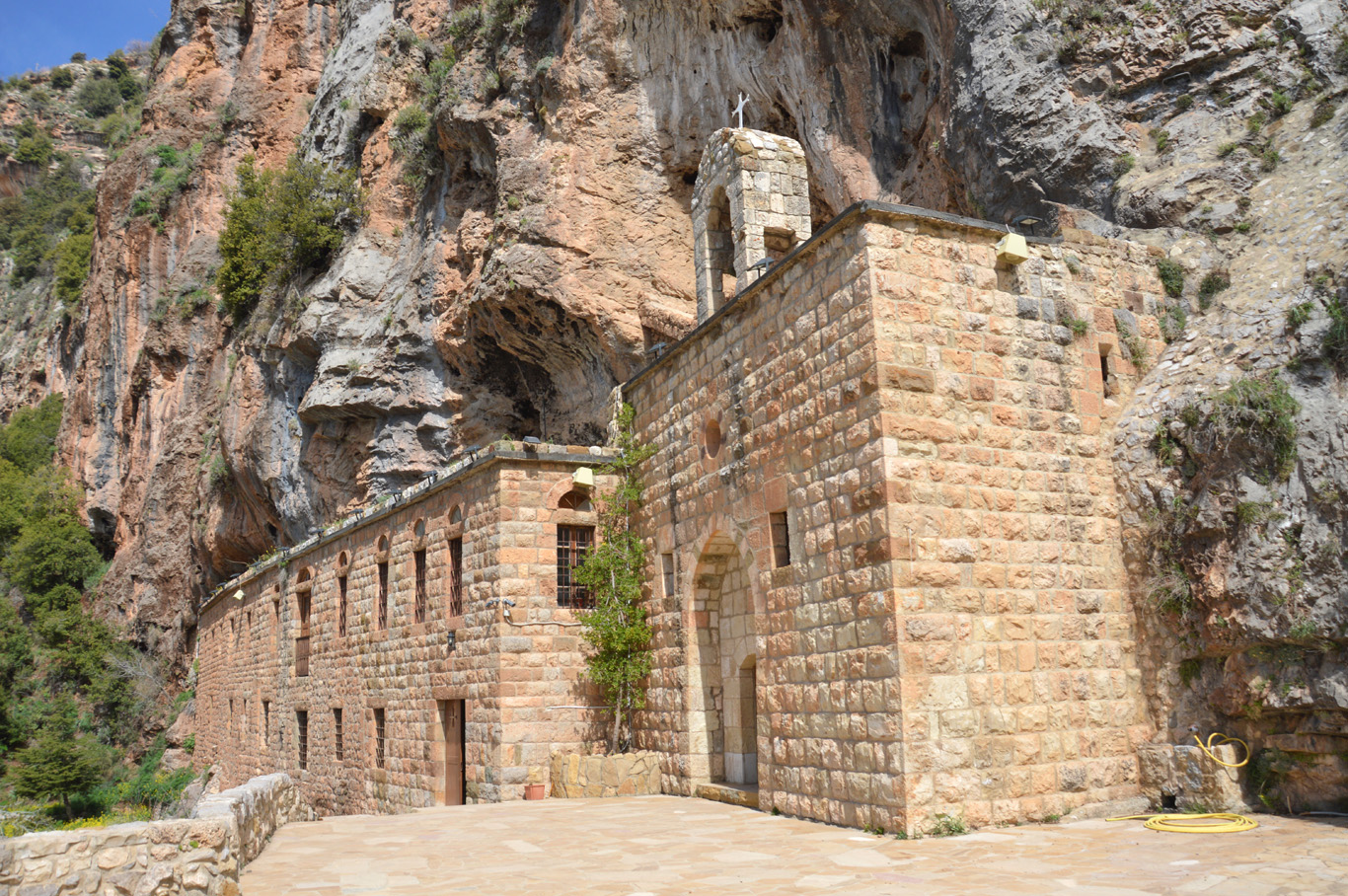At first, Qadisha Valley wasn't in our itinerary of places to see in Lebanon. Apart from the obvious sites of this fascinatingly diverse country, like Beirut, Byblos or the ancient Roman ruins at Baalbek, we wanted to see the Lebanese cedar forests in their natural environment as well as the spectacular Baatara sinkhole waterfall which is one of the most unique natural phenomenons I've seen.
However, after we organized a trip to Baatara/Cedar Forest Natural Reserve, our guides recommended we also see the magnificent yet way less known Qadisha Valley. And it was such a great piece of advice! Although the other two natural wonders are spectacular, it takes only a very short time to visit them. Qadisha Valley, in turn, proved to be an amazing journey into the past where history of hermits and monks who had lived in the cave dwellings intertwines with the breathtaking views of the gorges and high mountainous peaks covered with white blanket of snow.
How to get to Qadisha Valley
For an ordinary tourist, the best way to get there is to take a tour or a taxi. There is no public bus available - you can possibly drive, but you would have to know the people that could let you in the sites. The best option is to have a guide in order to see some of the inaccessible and hidden parts of the valley. There are very few tourists visiting the monasteries at the moment, so for the most of the time they are closed. A good guide will know the caretakers of the area and will be able to obtain the keys so you can enter the fascinating sites which are not easily available for the public.
The prices may vary and we were lucky to find out a great deal with "Living Lebanon". You can save even more when you join a pre-organized tour. They were actually the only tour operator that answered our requests about visiting the sites in Lebanon. I suppose many other tour agencies suffered enormous loss due to the unstable situation in neighboring Syria and don't operate anymore. Here is the link through which you can contact them and ask for details.
The hike in Qadisha Valley
If you love history, off the beaten path places, nature, tranquility and peace, you will find it all concentrated in Qadisha Valley. If you've visited places like Ihlara Valley in Cappadocia, Turkey or Vardzia/Uplistsikhe in Georgia, you'll have an idea of what to expect. It takes around 1.5 hours to do the complete full loop-trek around Wadi Hadchit which is a nice portion of Qadisha Valley, full of medieval monasteries. We went to the Qadisha Valley in spring, which was great because we could experience the contrast between the Mediterranean Beirut, fresh highlands and cold snowy mountains.
The hike is extremely pleasant and easy to do with great, breathtaking views. Apart from the panorama of the beautiful Lebanese Moutnains, we saw some modern homes virtually hanging over the edge of the cliffs. It made us think those people can enjoy one of the best views in the world from their living room... To "upgrade" the amazing feeling during the hike, the guides offered us a delicious lunch made all from organic ingredients including fresh vegetables and fruit from their own backyard garden.
Cave churches appear everywhere in Lebanon, way before the Qadisha Valley
Hasroun town, near Qadisha valley
Mar Saba Cathedral in Bsharri
Qadisha Valley
Qadisha Valley
Some of the hidden dwellings in Qadisha Valley
One of hundreds little waterfalls in Qadisha Valley
Snow still on the mountains in the spring
Qadisha Valley
A house on the edge... with a view!
Monasteries in Qadisha Valley
Along the trail, you can explore a few magnificent monasteries. Some have been restored in all details, others - crumbling and abandoned, are the silent witnesses of bygone times. I, personally, prefer the latter - where we could admire original frescoes from around the 10th century and feel like real explorers. I think it goes without saying that we didn't encounter even one more tourist while doing our hike - the experience felt truly authentic.
The age of some religious spots, dates back to the beginning of some Christian communities in the region, as far as the 4th century A.D. The ascetic way of life and the cult of some hermits who chose to live and meditate in natural caves, very often in the middle of very high cliffs is fascinating. Even nowadays, a lot of them are only accessible with caving or rappelling equipment. Some of the hermits entered the caves using ladders or ropes and stayed there for decades receiving food only from the local community. To stay separated from the outside world - that was a tough challenge...
The history of the largest Christian community in Lebanon, the Maronites (named after Saint Maroun, 4th century/410 A.D), is tightly linked to this valley and the villages on top: it is the place where the patriarchs and the bishops lived, it is the place where the Maronite Order was founded.
Here are some of the most important monasteries:
Mar Lichaa Monastery
The Mar Lichaa Monastery is one of the most popular landmarks in Qadisha Valley. Beautifully restored, built into the vertical cliff wall, is exceptionally impressive. The date of its first settlements is unknown. What is known:
Starting the 14th century, is was the residence of the Maronite bishops. In the 17th century, a French man from Aix-En-Provence nobility called Francois de Chasteuil decided to live there as a hermit. He died from tuberculosis in 1644 and is now buried there. The Maronite order was founded in this monastery between 1698 and 1700. The last hermit of Mar Lichaa, Antonios Tarabay, died in 1998 and is now almost worshipped by some believers.
Mar Lichaa Monastery houses a very interesting find which remains a mystery until today - The Black Slab. A medieval sign of Christianity in the Orient is engraved in it, it's not a fish, but a geometrical form representing God in its center, a cross and the four Evangelists (take a look at the photo below). What's fascinating about it is that it bears inscriptions in the Syriac language, written in Estrangelo script which was commonly used in Lebanon mainly before the 12th century. Most likely, the slab was brought by the monks from Aleppo and dates back to a period older than the oldest archaeological evidence in Mar Lichaa.
Saint Anthony of Padua
Little is known about this church. It's a 13th century building with some recent renovations. One can still see the original wall on the second floor, built with mud and uncooked clay. Having clay and not producing bricks is most probably related to the fear of the Maronites who didn't want the fire resulting from this industry to reveal their position.
Monastery of the Cross
This is one of the most important cultural heritage sites in the valley. Dating back to the 10th century, it is the home to a 1000 year old painting of a crucified Jesus. The site was unfortunately vandalized either during the civil war or by gold diggers after the war, which lead to the loss of a Greek inscription and parts of some 12th century paintings. The lack of protection from wind and rain also caused a collapse of parts of the building.
3 languages can be found in a written form: Syriac (Estrangelo and Serto), Greek and Arabic. One of the Arabic inscriptions shows the word Satan written upside down.
The place where the monks used to live is totally destroyed. 4 cells of hermits can be seen on the cliff below the monastery.
This monastery is normally closed to the public, but our guide had connections with the administration of the area and we were lucky to get in. It was my favorite site on the trail as it was the most authentic (although, unfortunately, badly damaged).
Mar Sarkis (Saint Sergius)
This is a church under the oldest and the largest oak tree of the valley. Not much more is known about it. There's a beautiful view, allowing you to admire a whole cross-section of the valley from the church.
Mar Bahnam
It's a typical hidden church of the Qadisha valley, showing the built-in amphora used to lower the echo. It is a Syriac Catholic church, most probably dating from the 12th/13th century. The old paintings are disappearing very quickly, only few colors can be now seen.
Saint Shmouni
The only female saint's church we visited. Shmouni or Shemona is a person cited in a book called 2 Maccabees (2nd century B.C). The church's rocks were entirely painted, mysteriously destroyed by the people who renovated this place. Some pictures taken in 1975 were found and are now printed on posters.
Mar Lichaa Monastery
Mar Lichaa Monastery
Mar Lichaa Monastery inside
The Black Slab
"The rosary" - Rock formation in Mar Lichaa Monastery that occurred naturally
Saint Anthony of Padua church
Saint Anthony of Padua church
The badly damaged Monastery of the Cross (10th century)
Monastery of the cross
The ruined interior of the Monastery of the Cross
Frescoes dating back to as early as the 10th century - Monastery of the Cross
Monastery of the cross - side view
Mar Sarkis (Saint Sergius) church
Mar Bahnam church
Saint Shmouni church
Saint Shmouni church inside - frescoes were destroyed by locals trying to renovate it
Author: Tom @ Adventurous Travels
Related Posts
Copying without permission is not allowed. If you wish to use any of the site's content (photos or text) or work with us, please contact us.
We welcome questions, advice, support or criticism. However, spam comments will be removed.

































